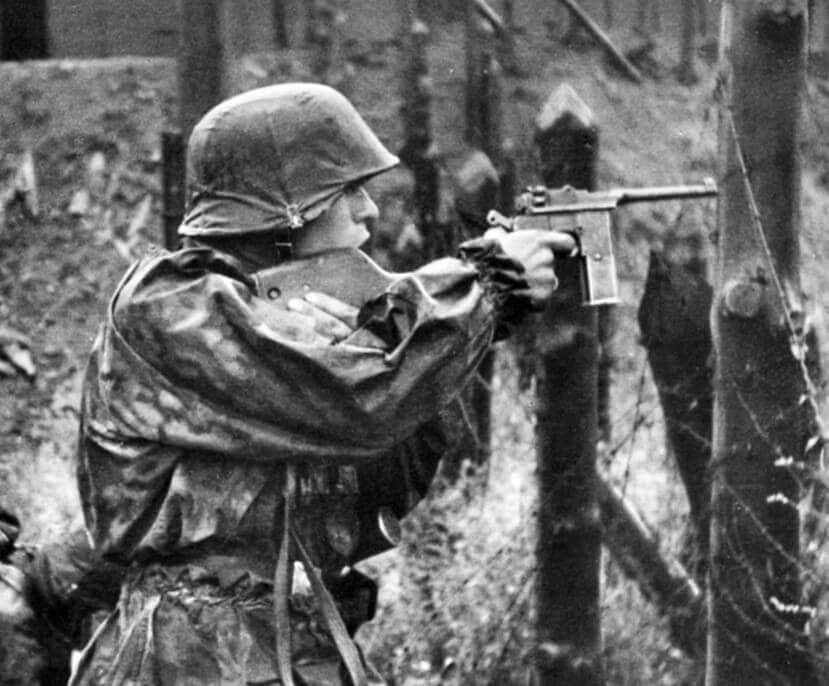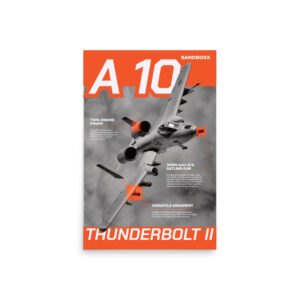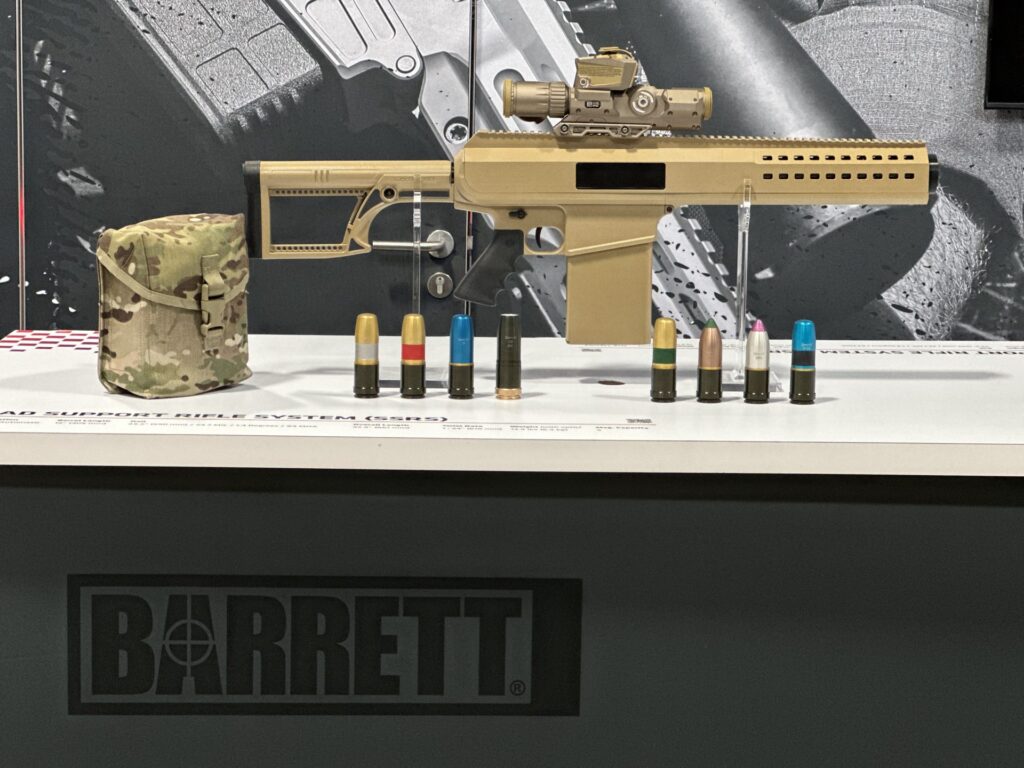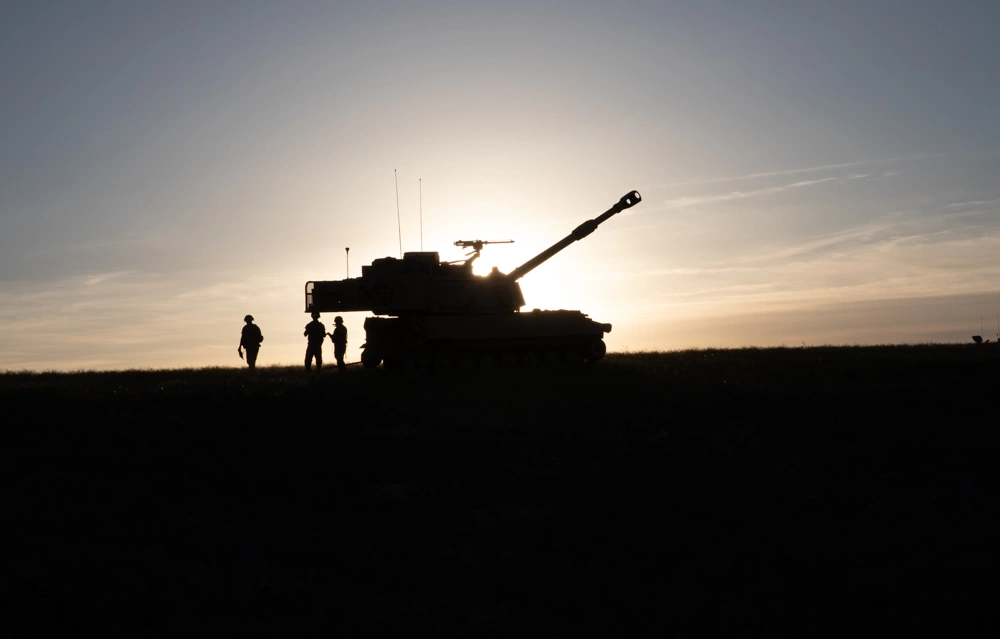This is why stocked handguns never achieved success
- By Travis Pike
Share This Article

Does tossing a stock on a handgun magically make it a rifle? If not, where is the line drawn? I’m not simply talking about various laws for civilian firearm ownership but from a military perspective. Stocked handguns have always been fascinating to me, and as a genre of firearms, they are most often ignored these days. We live in a day and age where the carbine rules and the stocked handgun never exactly had a day in the sun.
But I like the weird, unusual, and unappreciated, so today, we are diving into the world of stocked handguns from their early days to the modern age and exploring their history, purpose, and where they fit in the world of firearms.
The early history of stocked handguns
Declaring the first stocked handgun is likely impossible. In the early days of firearms, so many people were doing such a wide variety of weird things that finding the first time a guy tossed a stock onto a matchlock handgun would be tough.

Some of the earliest practical stocked handguns are, unsurprisingly, revolvers. Colt revolvers could be fit with stocks of all types. The Colt 1851, for example, had this rare but very stock that doubled as a canteen. S&W produced revolvers with stocks, most famously the Australian model of the No. 3 revolver. Australian police ordered 250 No. 3s with shoulder stocks in 1880.
Early variants like the Colt 1851 came to be since repeating rifles were rare at the time. Colt produced the Ring Lever Carbines, which were percussion revolver rifles, and that same idea led to the Colt stocked handguns.
A rifle that could fire multiple rounds without reloading could be quite handy. Revolver rifles were a bit rare and expensive, but Colt revolvers ruled military contracts, and if you already had the revolvers, all you needed was the stock.
Revolving rifles and stocked revolvers have problems and are difficult to use due to the gap between the cylinder and barrel. This gap had an issue with gas escaping and burning the support hand if fired like a rifle. Once lever guns appeared, the stocked revolver fell to the wayside.
Related: Quiet Special Purpose Revolver: The tunnel rat’s lost sidearm
Turn-of-the-century stocked handguns

In the late 1800s and early 1900s, stocked handguns in the form of automatic pistols made a comeback. The attitude was more about why not than why. A handgun with an optional stock increased the weapon’s range, made it much easier to shoot, and functioned somewhat as the lighter carbines of a later age.
At this time, automatic handguns were replacing revolvers en masse. Early automatics like the Borchardt C93 and Mauser C96 came in numerous configurations and allowed the mounting of stocks and barrels of various lengths.
As the world entered World War I and its trenches, warfare became more up-close and personal. The rifles at the time were massive and most were longer than three feet; they also had slow-firing bolt actions. These guns were slow and clumsy in the trenches.
So, rapid-fire, close-range weapons were needed, and handguns just worked for that role. But what would have worked even better was stocked handguns.
At the time, Steyr made the Repetierpistole M1912/P16, a machine pistol variant of the M191 that used a shoulder stock.

Another weapon was the Artillery Luger which was most famous for its longer barrel, 32-round snail drum, and stock attachment. The pistol was officially known as the LP08 and was used in aircraft, by artillery, and by the newly formed stormtroopers.
The stock and slightly longer barrel combined with the snail drum made it a hard-to-beat close-quarters weapon. The effectiveness of the design would later inspire the MP 18 submachine gun.
Related: The GAU-5A – Why Air Force’s mini rifle works
The birth of submachine guns and the decline of stocked handguns
The LP08 inspired the SMG, which would go on to more or less deal a death blow to stocked handguns. Dedicated submachine guns offered more firepower, were more ergonomic, easier to use, and more capable than a stocked handgun. Even so, the stocked handgun didn’t die outright.
In the post-war period, America experimented with machine pistol variants of the 1911, which were fit with stocks. Thus, the Browning Hi-Power came to be which could be fitted with a shoulder stock that doubled as a holster. (Although this wasn’t the first gun to do so as most wooden stocks doubled as holsters during this period.)

While they were produced, stocked handguns were less common than ever before. In 1934 the United States passed the National Firearms Act that regulated stocked handguns heavily, so civilian use was killed almost overnight in the United States. After WWI, the Treaty of Versailles prevented the Germans from producing SMGs and stocked pistols, so any German development was also canned.
Related: This LVAW is SOCOM’s overpowered answer to the SMG
The machine pistol

Admittedly WWII was a war of submachine guns, and the stocked handgun didn’t make a big difference here. However, in the post-WWII world, there was an interest in machine pistols. A machine pistol is a selective-fire handgun, and most were fit with stocks.
The Russian Stetchkin pistol is one example of the early modern machine pistol. The Russians developed the weapon in 1951 for non-front-line troops like mortar crews, artillery crews, and similar forces. Stocks ranged from early wooden stocks to brown bakelite and simpler wire stocks.
In 1970 HK produced the futuristic-looking HK VP70 which was an odd duck. With the stock added, shooters could fire three-round bursts, but it was semi-auto only without the stock. That same year Beretta produced the 93R, a selective-fire machine pistol with a wire stock.
In 1986 Glock produced the Glock 18, a machine pistol with an optional stock, for the Austrian EKO Cobra unit. Machine pistols are very niche tools, and like most stock handguns, they were never particularly useful or widely used.
The modern stocked handgun

Modern stocked handguns are fairly rare, with only a few modern examples worth mentioning. Brugger and Thomet produce something known as the Universal Service Weapon, which fits a minimalist stock to a handgun and a mini red dot. They also produce kits to fit Glock and SIG pistols with a stock to do the same.
Flux Defense makes numerous systems to outfit a handgun with a stock or pistol brace and numerous other enhancements. These kits are produced for the SIG and Glock pistols as well. These designs allow police officers to carry something smaller than a submachine gun but more capable than a pistol.
There are a variety of kits out of Israel that work like chassis systems to envelop a handgun and add a stock and an optics rail and accessory rails. These kits are made by several different companies and have names like Roni, KPOS, and Kidon.

These stock handgun kits are popular in Israel because acquiring a handgun there is easier than a rifle, and dropping a handgun into these kits doesn’t change its classification.
Although these kits exist, they haven’t been adopted by any major police or military forces. Stocked handguns still seem to be regarded without much appreciation. Admittedly, they are exceptionally niche, although models from Flux and B&T certainly have potential with their high quality and minimalist takes.
Stocked handguns fascinate me, but they’ve always missed the mark just a bit in terms of usefulness. They have a history intrinsically tied to modern firearms, even if that history comes down to just not being good enough and serving as inspiration for better weapons.
Read more from Sandboxx News
Related Posts
Sandboxx News Merch
-

‘Kinetic Diplomacy’ Bumper Sticker (White)
$8.00 Add to cart -

‘Sandboxx News’ Camo Trucker Hat
$29.00 Select options This product has multiple variants. The options may be chosen on the product page -

A-10 ‘Thunderbolt Power’ Poster
$22.00 – $28.00 Select options This product has multiple variants. The options may be chosen on the product page

Travis Pike
Travis Pike is a former Marine Machine gunner who served with 2nd Bn 2nd Marines for 5 years. He deployed in 2009 to Afghanistan and again in 2011 with the 22nd MEU(SOC) during a record-setting 11 months at sea. He’s trained with the Romanian Army, the Spanish Marines, the Emirate Marines, and the Afghan National Army. He serves as an NRA certified pistol instructor and teaches concealed carry classes.
Related to: Gear & Tech, Military History

5 ways to prepare and survive the Marine Corps boot camp

Barrett’s Squad Support Rifle System will make infantry squad deadlier

The unique world and uses of howitzers

How close are the Colonial Marines from ‘Aliens’ to actual Marines
Sandboxx News
-

‘Sandboxx News’ Trucker Cap
$27.00 Select options This product has multiple variants. The options may be chosen on the product page -

‘AirPower’ Classic Hoodie
$46.00 – $48.00 Select options This product has multiple variants. The options may be chosen on the product page -

‘AirPower’ Golf Rope Hat
$31.00 Select options This product has multiple variants. The options may be chosen on the product page -

‘Sandboxx News’ Dad Hat
$27.00 Select options This product has multiple variants. The options may be chosen on the product page
